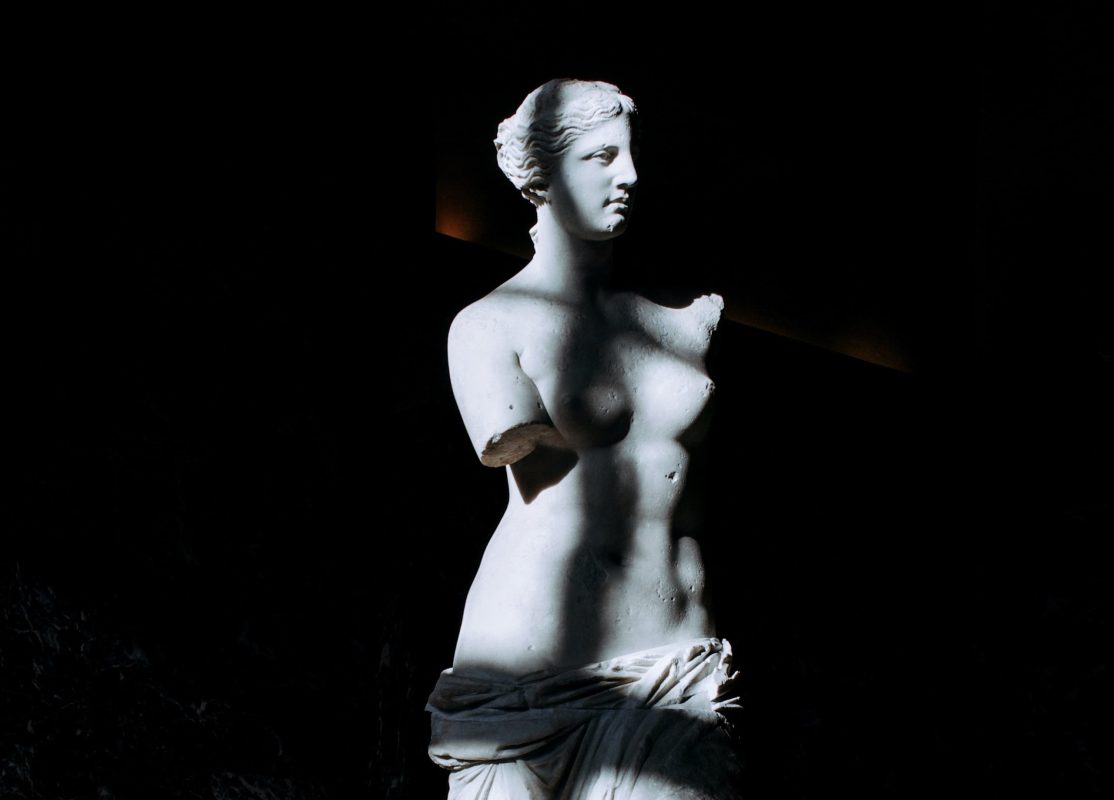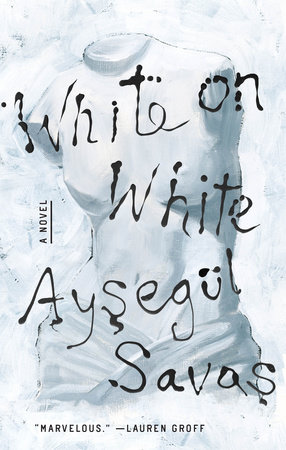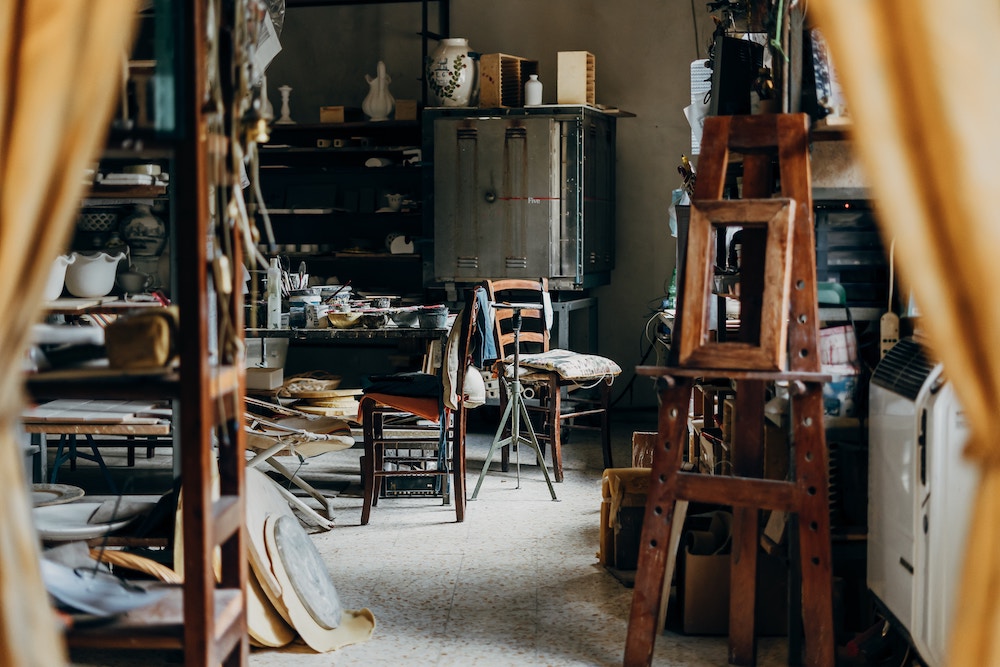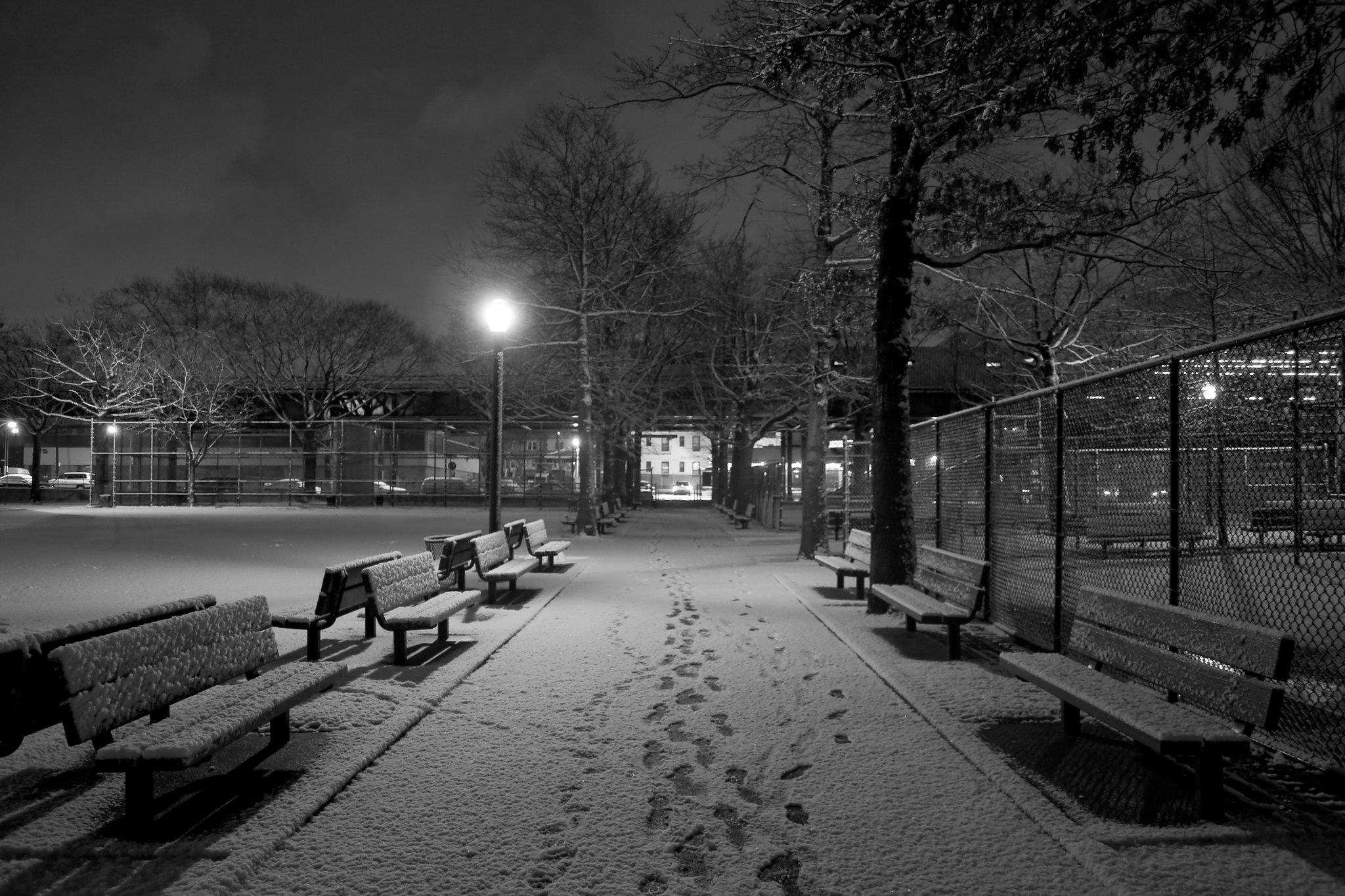Interviews
How Nudity Both Reveals and Conceals
Aysegül Savas, author of "White on White," on how a character can hide by revealing too much

When the narrator of White on White arrives at the apartment, they assume that they will have the rooms to themselves, a beautiful light-filled place to serve as home base while they conduct their research on Gothic nudes. But soon after arriving, their landlady Agnes suddenly appears and explains that, for unexplained reasons, she and her husband have decided that she should live for some time in Agnes’s studio above the narrator’s rooms. A painter, and the wife of Pascal, a professor in the narrator’s field of art history, it soon becomes clear that Agnes is the primary subject of the book.
The narrator—unnamed and unidentified, with a gender and history kept purposefully in the background—serves instead as a reflection of an older woman caught in a personal catastrophe. Agnes supposedly begins painting, the white on white works from which the novel derives its title, but her main purpose, it seems, becomes talking, spiraling down into her personal crisis with the narrator as sole and at least partially captive audience.
The genius of Aysegül Savas’s second novel is the way in which, through the narrator, the reader becomes witness to Agnes’s unraveling via narrative, and through her attempts to put her life in some order via story, we get the clearest sense of the forces driving this woman’s life apart. By stripping away the conventions of fiction, Savas has given us a novel that shows the way storytelling, rather than revealing, can be a way of obscuring, even for the storyteller herself.
Alyssa N. Songsiridej: I’m really interested in writers who write about artistic mediums that are completely different from language and from words. How did you get into the mind of a painter? What background research did you have to do, and why the choice to focus so much on painting in your work?
Aysegül Savas: Well, first of all, it’s my fantasy career. It’s what I wish I had been, or what I hope to be in a different life, but I don’t paint. Which is helpful, because I wasn’t burdened by a lot of technical details; I could just sort of imagine things. But at the same time, I thought, how is a painter’s process? And when you don’t know too much about the nitty gritty of something, then it seems more alluring and more fun to write about. At the same time, there were things while I was writing when I thought, is this realistic? Like, I mean, do painters really work on easels for example, or is this just a cliché?
ANS: As a matter of fact, I’m at a residency full of painters; I’m the only fiction writer. And they do work on easels, I know that now.
AS: Painting today is such a different thing. I did want Agnes to be an old fashioned painter working with oils, on a canvas and with an easel, because I thought it fit the atmosphere of the book. The one book that really guided me and was a huge inspiration, not exactly for Agnes, but the process of painting, was Celia Paul’s Self-Portrait. She’s a painter and she was married to Lucien Freud, and she wrote an autobiography about being a painter and being a mother and her life.
And, then the other thing about painting, is I thought: Okay, well, I don’t know everything about painting, and maybe I also don’t necessarily want the book to be just about the artistic process or just about the technical aspects of being an artist, but I do want the book overall to have a painterly quality, which is something that you can do with language. I think this is how you transfer another medium on your writing. By paying attention to life. You know, the types of things that painters do, you can also do as a writer: you can pay attention to objects, you can pay attention to dimensions, which is why the narrator also pays a lot of attention to the apartment and the various moods of the apartment.
ANS: Something that really struck me as I was reading the book was the way that, even though, narrator’s interested in nudity and medieval painting, they are so focused on Agnes’s clothes and her objects and the things that she owns. And it seems all connected to this tension between concealment and representation throughout the book, coming through to the objects and through Agnes’s work. I was wondering if you could talk a little bit about that too.
AS: Nudity is one of the bigger themes of the book and it’s not nudity as basically a lack of identity or a state of neutral identity, right? The city that the book takes place in isn’t named, which isn’t to say that it’s not a city, and in the world of the book, there is such a city, but it’s just not named. And the identity of the narrator is also not named. The narrator could be a woman or a man, the narrator could be American or you know, English or Turkish or anything. But there’s the state of concealment that is both a state of neutrality, but also a state of mystery. Once you have a neutral state, you begin to load it with meaning and you begin to guess. Like, the narrator reads as a woman to most people who read it. And I was interested in why that is, why our minds project stories. And a lot of people have guesses for the city. It is Paris, it’s Bruges, it’s Rome. And this ultimately has to do with narrative, which is what Agnes’s story is all about. It’s about how she’s shaped everything into a personal narrative and how she’s made sense of her entire life. And in a way the reader is also making sense of all of the material that is presented to them.
ANS: I love what you said about nudity being neutrality and not like an absence. And it’s interesting what you said about so many people reading the narrator as female. I’m wondering if it has something to do with the way the narrator sort of serves as a surface for all the other characters to respond to. Which we tend to think of surfaces as not mattering, but they actually matter a lot, particularly in painting. The sort of function of the narrator is not quite like anything I’ve seen in any other story. And I’m wondering if you think that the narrator serving as a surface gives the book a sort of painterly quality as opposed to what you’re saying about narrative, the way Agnes is interested in narrative. Because it seems like narrative and painting are in tension, like they wouldn’t connect.
AS: I guess part of the reason that most people read the narrator as female—although I’m not sure about this. I mean, it might be because the author is a woman, so you assume the I speaking is also a woman. But also because the narrator seems like a wall for Agnes’s words to bounce off of. So maybe one begins to conflate Agnes and the narrator, or the narrator is sort of a porous surface that absorbs what Agnes is saying.
Once you have a neutral state, you begin to load it with meaning and you begin to guess.
Another reason for this might be that if Agnes is telling such detailed stories, is opening up to someone, this person must be a woman because only women listen to really intimate stories, and also maybe feel uncomfortable about the situation and can’t say I have to get out of here. But none of those are actually determining facts about the narrator’s identity.
The reason I wanted to eliminate all aspects of the narrator’s identity was because there’s an expectation in fiction that we attach to story if we care about backgrounds, if we care about why a person acts the way they do. There are all of these tropes of fiction. You know, make me care about your characters by giving me a childhood memory, gestures, their particular way of speech, and I thought, Okay, what happens if I get rid of all of those things, all fictional tropes and sort of strip an identity naked? Like the nudes that the narrator’s studying. And then what do we care about? And then who do we side with? Do we side with the narrator? When the narrator is cruel to Agnes? Or do we think that the narrator is being a bit extreme or has gone too far in not leaving the apartment or not telling anything to Agnes?
ANS: Yeah, I love that kind of stripped down fiction, the removal of explanations, and it’s interesting that the reader ends up filling in what’s not on the page, like all the things that you’re saying about all the assumptions people make about the narrator based on what they bring to the book, and how the book makes space for someone else.
I was noticing as I was reading that with the book’s structure, it’s not just that I’m interested in what’s happening on the page—I’m also interested in my own reactions to what’s happening on the page. So it’s almost like the reader is participating in this unusual way. And this also makes me think about Pascal, Agnes’s husband. There’s only one short scene at the end with Pascal. And it was interesting to me that he reacts completely differently to the narrator than Agnes does. He gets very upset that the narrator is not responding to him. I was wondering if you had anything to say about their different personalities and what that says about both of those characters.
AS: I wanted to break some of the some of the tension and some of the tedium of Agnes’s monologue. So that’s one sort of technical reason for why he reacts so differently. But on the other hand, it is mimetic of Agnes and Pascal’s lives in some sense. He’s a selfish man. And he can meet this narrator for the first time and say, hey, why are you not sympathizing with me. And he’s so impulsive in this way, and he’s greedy enough to say, Pay me attention and show me sympathy, in a way that Agnes hasn’t been able to do throughout the novel until maybe the very end. And she sort of patiently or perhaps a little bit madly keeps talking to the narrator, maybe in hopes of some recognition but never with the impulsiveness of Pascal. And this might be gendered in some ways as well, because we see the ways that Agnes talks about her children and how she’s how she’s taking on the burden of parenthood in a way that Pascal hasn’t. And how she’s allowed herself to be changed by being a parent in a way that Pascal hasn’t because he sort of has wanted to live his life the way he wants to live it
ANS: I want to jump back a little bit to what you said about Agnes being kind of an old fashioned painter. I want to talk about Agnes’s work itself. We know that she’s making these white paintings but my brain at least didn’t feel very engaged with them. Like I couldn’t quite see them. I wanted to talk about the nature of Agnes’s own work to the narrative and what’s happening to her in the book.
AS: As far as I can recall, we see three, or three sets, of Agnes’s paintings. One set is the paintings that the narrator sees at the gallery, which are colorful masks, and Agnes later says, well, those weren’t really real paintings. I was just pretending to be an artist, and I thought, this is the type of stuff that that artists paint. And I meant them to be sort of false and therefore masks in the way that the whole book is dealing with these masks and the various costumes that people put on to conceal themselves or to appear differently.
A nude body can also absorb so much meaning. You can put so many different types of clothing on it, right?
And then in the main stretch of the novel, she’s working on these white paintings, but we don’t really see them. The narrator sees one of them, of this figure in freefall. But Agnes says she’s painting, but she’s not really painting. It’s not really clear what she’s doing up there and I did want that to reflect her psychological state.
And the white on white paintings—they can be about nudity or about being who you are, but they can also be a sense of being lost, a sense of unclarity about what’s going on. And I think both are true in the case of Agnes. She doesn’t want to look at certain things, or she doesn’t want to face certain facts about her life. But she is also at a state where she doesn’t really care. She doesn’t care if she appears naked in front of the narrator. She wouldn’t be embarrassed. So I think the white on white paintings work in both ways. And it’s sort of a mental fog that she’s in throughout the novel as she’s trying to process her life. And then we have the third painting, which is the Last Supper, which I imagined as a very white painting. But it’s this painting where she’s also finally been able to say, this is my reckoning, and this is what I’ve made of people I’ve been cruel to in in my own life, and also people who’ve been cruel to me.
ANS: It’s very interesting that she paints portraits, and actually, portraits of the people that she’s been cruel to her—her family and the people that she left behind. Like holding an image of them but that’s kind of lacking in some way.
And about the white on white painting—as I was reading, I was thinking about how we think of white as being blank. It’s like the page, it’s like nothing, but also it’s actually also everything. It’s every color being reflected. I mentioned the book to the painters that I’m here with, and they talked about an artist who works only in white because the white exposes the surface of the thing that the color goes on. So I was wondering about that sort of dual nature of the color that’s the title on the book, the color that’s Agnes’s main medium throughout the book.
Narrative is a way of cloaking yourself, right? Because if you’re constantly coming up with your own story, you’re constantly covering yourself up so people can’t see your vulnerabilities.
AS: Once I figured out that the book would be called White on White, I thought, oh, this will be a good metaphor. It will be thematically rich for the rest of the book. It’s both an absence but also everything at once. The Gothic nudes are also like this. There are very, very few Gothic nude sculptures in the golden age of Gothic sculpture, but when they do appear, the bodies aren’t judged. They’re very pure forms. Often they’re there without gender. And they represent these moments of totality. They appear in scenes of the Last Judgement or they appear in the Garden of Eden when either the world is complete or the world has ended and everyone has gathered together. I thought this was very interesting as well. And the idea of Agnes’s white on white paintings echoing the Gothic nude sculptures.
ANS: Absolutely, like the way that the body is there, but it’s also represents something beyond it. It kind of goes beyond its own meaning
AS: Exactly. And this in the same way that white can absorb everything. A nude body can also absorb so much meaning. You can put so many different types of clothing on it, right?
ANS: It’s kind of been like what we’ve been talking about. A nude the perfect surface for some people to project themselves on—desire or whatever or anger or other kind of reactions.
And I love all the stuff with the narrator talking to their advisors, and advisors like, why are you why are you doing this? Why are you studying Gothic nudes? This is really hard. And the narrator’s goal is to try to look at the nude body in the same way as a Medieval person. And that really struck me, because it’s true that we look at these objects from history and we think we’re reacting them the same way. But we aren’t because obviously we have like a completely different culture and history and sensibility.
AS: Yes. And you know, sometimes we think something’s beautiful, or something’s very happy and it might have had a completely different meaning. And taking on another’s consciousness. seems so difficult when you apply it to hundreds of years ago, but it’s equally difficult when the narrator is listening to Agnes and trying to understand—where is she coming from? Is this woman extremely wise, or is she mad or is she very tasteful? Or is she really weird? It’s sort of hard to read Agnes as well, hard to read her cues in the way that art history is hard to read if you’re not in the era in which it was made.
One of the big challenges was finding the research topic for the narrator. I was writing it, and I had started developing Agnes’s character and some of her monologues, but I thought I still needed a framework. I need this Gothic framework, and I knew that the narrator would be researching something Gothic, just for the sake of atmosphere and for the sake of mystery, but I didn’t know what. For a long time, I thought, well, it could be mourning, which I think is one of the topics the advisors suggests. Like mourners in Gothic sculpture.
But then—a book I really is Katie Kitamura’s A Separation. Mourners is the research topic in A Separation, and it works so well in that book, and I wanted something similarly perfect. So I wrote to a medievalist friend of mine asking what would be a good topic for this fictional narrator. And he sent me a whole bunch of ideas—they were all great. And then he said, by the way, this was my sort of fantasy project as a graduate student, and I never wrote it. And he sent me the proposal for the Gothic nudes.
ANS: It’s perfect. Wow. That’s the perfect person to know.
AS: Exactly. Everyone should have a medievalist friend. Maybe three medievalist friends
ANS: That’s funny what you said about A Separation, because I’ve been talking about White on White with the other editors at Electric Literature, and we feel like we see kind of a relationship between your work and Katie Kitamura’s work. Like your books both have this relationship to language and meaning, but White on White has that object-driven pictorial quality we were sort of talking about.
I know I said this earlier, but I just love the description of all of Agnes’s clothes. The smoked colored robe, etc. The world of the apartment seems very rich with colors too.
AS: That was part of the painterly quality I wanted to give the prose. And also the clothing is important from the perspective of nudity. And narrative is a way of cloaking yourself, right? Because if you’re constantly coming up with your own story, you’re constantly covering yourself up so people can’t see your vulnerabilities. And so it was important to me that Agnes’s clothes would be described carefully and that she would go from appearing very elegant and very well put together, which are the first narratives that we get of her and the way that the narrator perceives her, and then she would become increasingly disheveled. And we wouldn’t know—well is this an artistic outfit? Or is it just an outfit on the brink of madness?
ANS: Right, because Agnes seems so careful about how she’s presented. And so it becomes unclear if she’s deliberately presenting something, or if she’s kind of lost control of the train a little bit and things are starting to seep out.
Is there anything I haven’t asked that you would like to talk about?
AS: I guess one thing—how the spareness of the novel came about. I wanted a sort of ghostly quality, as if something was missing. Like there’s something off all the time, but you don’t really know what it is. And part of the way in which that came about was, there was a whole second part of the book, it twice as long (which happens to be the case in all the books I write; I then cut them in half) about the narrator’s life—the narrator’s friends, this group of young people, they go to museums, they go drinking. And then once I removed all of those parallel chapters, all of a sudden Agnes became really insistent, because every other chapter, Agnes is still there. Whereas before, you know, those were watered down with sections on the narrator’s life.
ANS: Wow, we’ve been talking about the narrator’s neutrality, the surface and it’s interesting to hear that there’s all that stuff there.
AS: I got bold, and once I pulled that all that away, and I saw the potential for what Agnes could become, and how I could push it even more. How I could push the weirdness a little further. I thought, let’s strip the narrator completely. So there’s not even the slightest glimmer of background there.
ANS: Oh, the one thing I could not remember. The doubling with Agnes’s cousin, who she wants to be like, and also the doubling in the book itself, like the repetition of the little passage about moving into the apartment.
AS: Oh, the part about how the apartment appears. I was playing around so much with doubles—the narrator and Agnes, the idea of a past self and the current self as the double that you’re constantly looking for. The double someone you admire, in the case of the cousin, and then how this double becomes a ghost, in a sense. You create a double of your desires, you create a double of your narratives, and this double follows you around throughout your life. And I thought, well, this is ghostly, how can I make the entire scene a double. And I thought, I could literally just copy and paste that opening scene, but maybe with a minor difference. Where you think—is this the same thing? Or has something shifted, like when you encounter your double after many years, when you encounter a person you admire after many years, so much has changed. And I thought, when we encounter that luminous apartments at the beginning of the novel, it’s filled with so much possibility, and anything could happen in this beautiful space. And then when we encountered again towards the end of the book, even though it’s the same words, and even though it’s the same empty, beautiful luminous apartment, it’s tinged with a sinister feeling.









